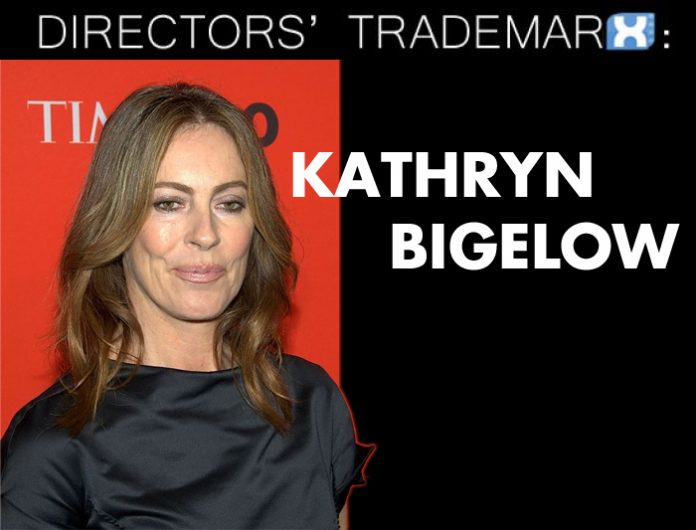
This title contains a cropped version of "Kathryn Bigelow by David Shankbone" by David Shankbone used under CC BY.
Directors’ trademarks is a series of articles that examines the “signatures” that filmmakers leave behind in their work. For this iteration, we are examining the works of Kathryn Bigelow as director.
Kathryn Bigelow was born November 27th 1951 in San Carlos, CA. At a young age she became a painter, and attended the San Francisco Art Institute. Soon after she became a working artist in New York City and eventually collaborated with Phillip Glass to renovate dilapidated apartments. She created a short film and submitted it to Columbia University where a professor was so impressed that Bigelow was offered a scholarship. Bigelow graduated with a masters degree in film theory and criticism and at first worked as a lecturer.
Her first feature film was a biker film, 1981’s The Loveless, which she co-directed with Monty Montgomery and made with support of the Museum of Modern Art. The film was shown at festivals and was not released commercially. Her first chance at directing a big budget film was 1987’s Near Dark, which flopped in theaters but was appreciated by critics and has since become a cult hit. Next, she directed 1990’s Blue Steel, which also did not find much commercial success and pulled in mixed reviews. Her big break was 1991’s Point Break, which became a hit despite mixed reviews. However, the forward momentum of her career was halted by the box office failure of her next film, 1995’s Strange Days. Despite a large budget, the film failed to resonate with audiences and confused some critics. She made her next film 5 years later, entitled The Weight of Water. Despite being shown at festivals in 2000, the film was shelved by the studio due to poor critical response and did not get a commercial release until 2002. In 2002 she directed K-19: The Widowmaker, which earned mixed reviews and failed to make a profit in theaters.
It would be another 6 years later before she released another film. In 2008, she released the self-produced low-budget The Hurt Locker. It was shown at the Venice and Toronto Film Festivals where it began to gain a lot of critical appraisal. The film was released in the US the following year, which made it eligible for that year’s awards circuit. It ended up earning 9 Oscar Nominations, winning 6 awards, including Best Director for Bigelow and Best Motion Picture of the Year. Bigelow’s Best Director win made her the first and only (so far) woman to win the award. The Hurt Locker’s Oscar attention would propel the film to achieve box office success. Bigelow’s next film was 2012’s Zero Dark Thirty, which became her most profitable movie while also receiving critical acclaim and Oscar nominations. Her latest film was 2017’s Detroit, which struggled at the box office despite positive reviews from critics.
So the question posed is, if you are watching a Kathryn Bigelow film and you don’t know it, what are the things to look for that would identify it as such? Here are five of Bigelow’s trademarks as director, in no particular order:
Warning, this article includes some spoilers!
Hypnotic Interludes
Bigelow often “interrupts” her film with shots that establish a certain aesthetic or theme central to the plot. These are short clips, often used in places where we would typically see a transition from one scene to the next. These interludes rarely have any characters in them, or people at all. Sometimes they can be in slow motion, but often they stay focused on a particular object or sequence which may seem like slow motion but isn’t. The purpose of these interludes is to maintain a consistent focus as the plot progresses.
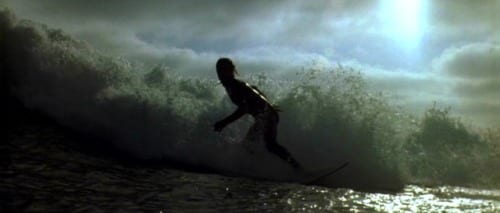
The short sequences featured in Point Break all depict a wave crashing in the ocean. In this case, these interludes are in slow motion, and the sound is natural. These sequences recall the central subject of surfing, something that both Johnny Utah and the criminals he is trying to catch are drawn towards. These sequences also recall the most important moments in the film. The character of Bodhi is introduced with a cut to a wave which he is surfing on in slow motion. The end of the film also sees Bodhi basically sacrificing himself to the ocean rather than turning himself in. Water is a very important theme in Point Break, which is repeated many times – it is a connection with nature, soothing and hypnotic, but also potentially dangerous and messy.
In Blue Steel, the interludes are aerial shots of the city. Again, there is a duality to this focus. In one sense, the lights of the city are very beautiful. In the scene when the main characters are taking a romantic helicopter ride, Bigelow focuses more on the scenery than the characters. But, the city is also a dangerous and claustrophobic place. The film is full of reminders of crime, traffic, and urban chaos. In Strange Days the interludes are also of a city, but shots of the streets showing cars driving through clouds of steam and the poor and homeless living on the sidewalks. These serve as reminders of the situation the characters are living in. As riots in response to racial injustice rage, our characters are caught up in the complexity and the future seems bleak.
Her later films feature fewer of these interludes but they are more integrated into the plot. In K-19: The Widowmaker, she uses external shots of the submarine moving through the ocean as transitions between two scenes. The Hurt Locker shows us shots of the buildings and rooftops in silence as the main characters work to disarm IED’s. These shots heighten the tension despite the static action because they add to the paranoia of an onlooker triggering the bomb or having a gun to shoot at the troops. In Zero Dark Thirty she often shows short clips of the environment in which the characters are working. These include shots of markets, shots of camouflage caught in the wind on an army base, and people walking on the streets. The final climax of the film also utilizes a lot of external shots showing the environment at night, setting up the scene in intense, almost smothering silence. In Detroit, Bigelow mixes in shots of destruction from the riots. Some of these are created for the film, and some were taken from footage of the actual events.
Practice Makes Perfect
Most of Bigelow’s films start with a false reality. Most of these opening scenes are a practice or training run for something that will happen for real later on in the film. In this way, Bigelow can tie the beginning, or the origins of the main character(s), to a pivotal moment near the film’s climax. She does this as a way to show growth of the characters, but also to introduce the audience into the setting in which the film takes place.
Both Blue Steel and Point Break begin with a short depiction of an exercise where the main character has a gun and is moving through some sort of a training course. In Point Break, it is raining, and Johnny Utah doesn’t miss. This scene demonstrates his competence but also his toughness. In Blue Steel, Turner gets “shot” by the supposed victim, which is supposed to serve as a lesson to be aware of everything that is happening around her. Sure enough, later on in the film Turner gets in several situations where she forgets this important lesson, and it costs her. In K19: The Widowmaker, the opening scene is a training exercise where the captain of the submarine is asking all of the stations to report. This is recalled later on in the film when the crew has to make a difficult decision together, and each station calls in to the captain to demonstrate their obedience.
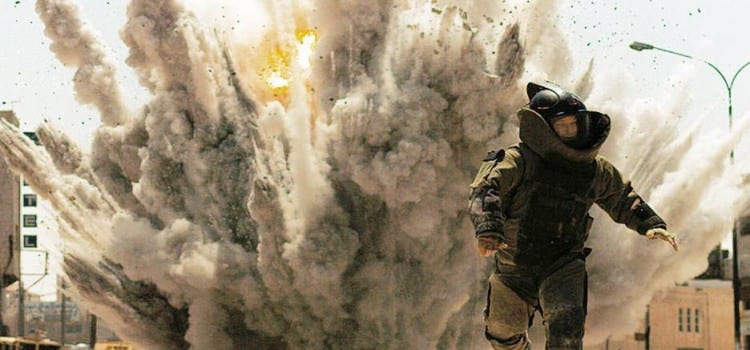
The opening scene in The Hurt Locker is a failed attempt to disarm an IED, claiming the life of a soldier. This isn’t practice, but it provides context into what the main characters are doing, and the risks they face on a daily basis. Furthermore, it follows Bigelow’s trend of setting up later scenes as it establishes a pattern which she can later play off of. The first scene in Zero Dark Thirty is the first torture scene in the film. This isn’t technically practice, but it is a rude awakening for both the audience and Maya. This is the audiences’ first introduction to Maya, and it happens to also be the first time she experiences torture as a method of intelligence gathering. Her shock is shared by the audience, but it is a learning experience. Later on there are additional torture scenes, and Maya is able to handle herself better thanks to her experience in that initial introduction. Likewise, the opening scene in Detroit is the event which ignites the riots which the rest of the film covers. In this scene, Bigelow establishes the high tensions, but also shows the naivety of the police in dealing with the situation, and in this manner, making things much worse.
Socially/Politically Sensitive Plots
The stories that Bigelow chooses for her films tend to depict events or circumstances which can be considered controversial from certain socioeconomic or political perspectives. She has said that she chooses her scripts based on stories which interest her, and would otherwise have not easily been made into feature films. They may be stories based on real events or circumstances which were not widely known or understood before the film was released, or they may be fictional stories with a focus on a somewhat controversial idea, often challenging conventions in some way.
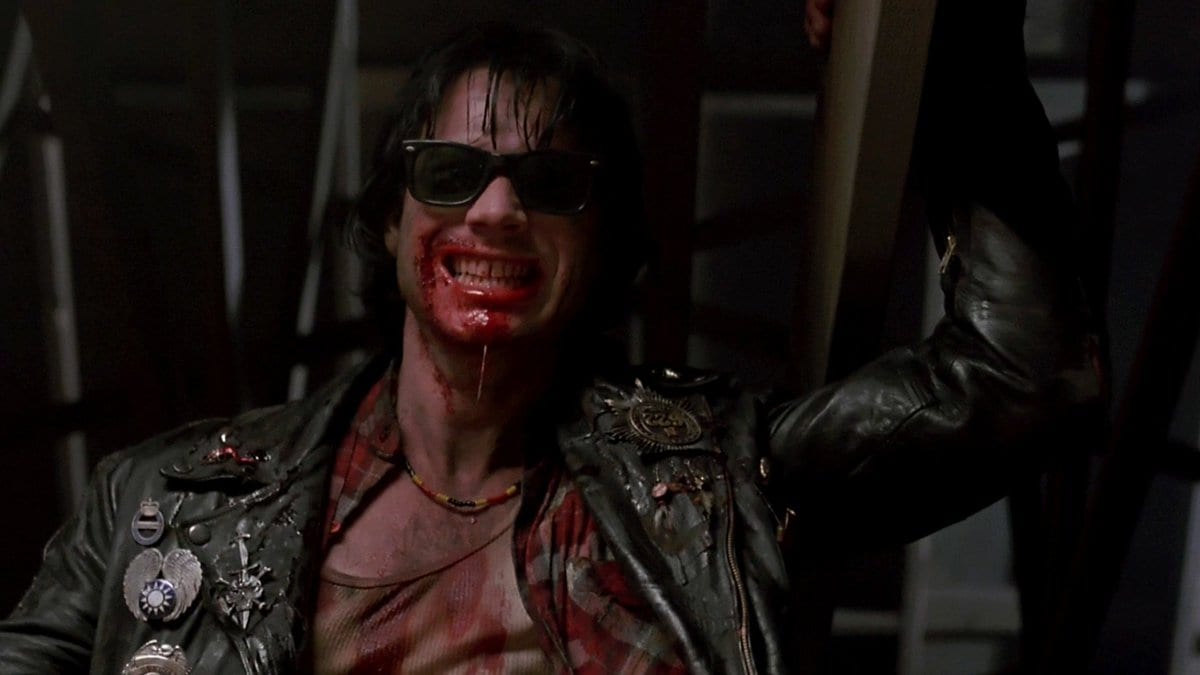
Near Dark for instance may be a vampire movie, but it is also a western. Bigelow and co-writer Eric Red wanted to make a western film, but vampire movies were popular at the time and they decided to make a hybrid. But despite being a vampire film, it lacks many of the conventions we would associate with vampire films such as crosses, coffins, holy water, or actually calling the blood suckers vampires. However, more than just a riff on film genres, Near Dark has some insightful social commentary. Instead of romanticising vampirism, this film explores the unpleasantness of the condition if it were to happen for real. For example, the vampires themselves are destitute and only survive by taking advantage of people. Depicted in this way, the vampires become a representation of the poor – not necessarily the needy, but those who have lived a life of hardship and use it as an excuse for their wicked ways.
In Point Break we see an exploration of the surfer/beach bum lifestyle. It directly contrasts a lifestyle congruent with modern societal expectations – earning money, developing a successful career – with a lifestyle revolving around the enjoyment of life itself and the natural environment. It is an interesting contrast, because in both cases the film’s proponents to each of these lifestyles can’t live without the other. Bodhi and his surfers can’t live and do what they love doing without money, and so they are forced into committing crimes. Likewise, Johnny Utah may be representative of the long arm of the law and a proponent of the order created when following the rules of society, but finds he can’t live contently without the embrace of nature and the thrill of living on the edge.
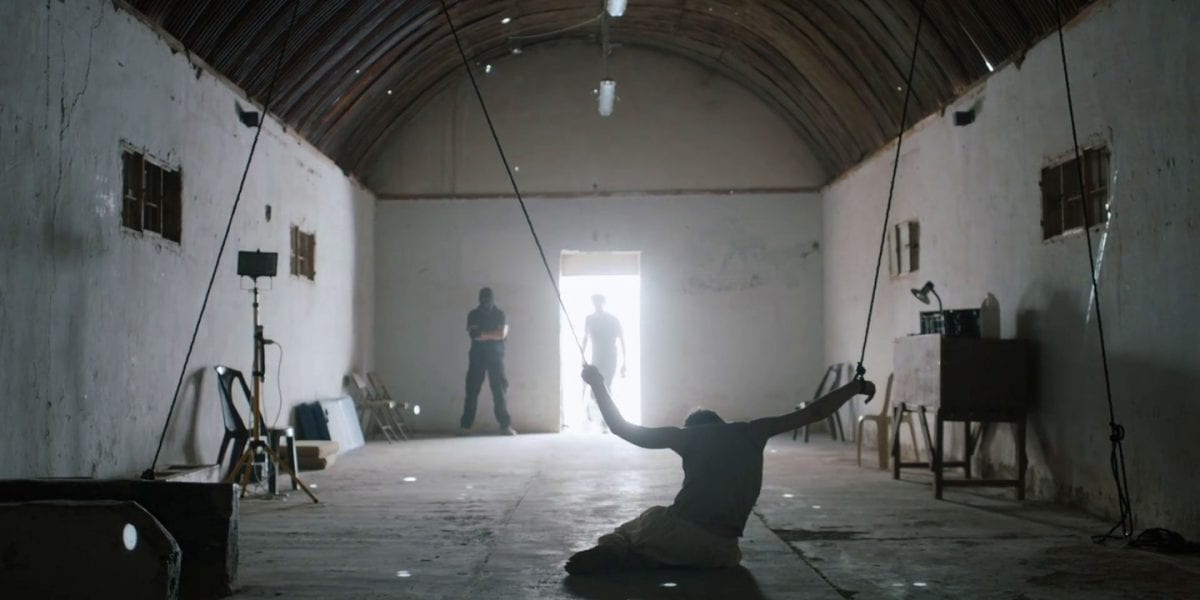
In terms of politics, K-19: The Widowmaker depicts a scary moment during the Cold War which nearly resulted in armed conflict and nuclear catastrophe. The mission depicted in the film is supposed to be just a training/test mission, but it is political tensions which cause leadership to push for more (in order to obtain their own glory), at the expense of the safety of their own men. Zero Dark Thirty discusses the implications of using torture as a method for intelligence gathering. It depicts the near-escapable reach of the US military-industrial complex, and the almost unfathomable things it can accomplish when there is political motivation to do so. Hurt Locker explores the war in Iraq, and specifically highlights conflicts between the troops and local populations, bringing into question the purpose/benefit of the invasion in the first place. Finally, you have both Detroit and Strange Days which explore race relations and the treatment of African Americans by law enforcement. In Strange Days, the police murder a rapper because his music has instigated protests against them. In Detroit, riots begin when the police arrest a group of people having a party at an unlisted nightclub.
Standing Out in a Crowd
While the hypnotic interludes slow down Bigelow’s films, many other techniques she utilizes help to add energy or activity to them. Her overall style is best described as kinetic, and that approach is most evident during action sequences when she utilizes quick shots, close ups of character’s eyes and mouths, and unsteady hand held cameras to give the action a more raw, less scripted feel. This approach to mimicking chaos on film could make it difficult for the audience to tell exactly what is supposed to be happening. However, Bigelow doesn’t allow the disorder to become overwhelming. In fact, she employs several methods to “help” the audience out.
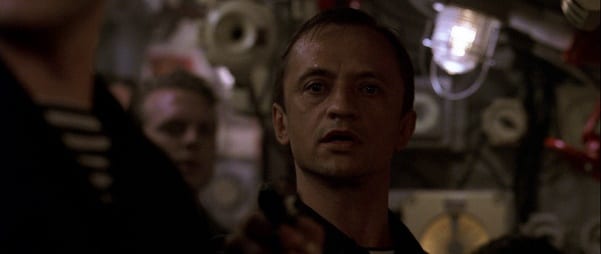
For instance, one of the ways Bigelow injects energy into her films is the way she frames or focuses on her characters. She often puts her characters in the midst of a lot of activity that is taking place both in the background and in the foreground. She then uses the camera’s lens to focus on the main character(s) while obscuring what is happening around them. This can be seen in the riot scenes in Detroit when she moves the camera along with a character in a crowd to help the audience identify with them. Or in an early scene in Blue Steel, Megan is walking along a very crowded sidewalk to her apartment. The camera’s focus is adjusted as she approaches, so that only she remains in focus while the blurs of other people walk by her.
Likewise, Megan’s dialogue is isolated. This is something Bigelow does often to maintain focus when there is a lot of activity on screen. For example, in the bank robbery scenes in Point Break, despite all of the hectic activity, the shouts of the bank robbers essentially explain what they are doing even if you can’t see who is talking. Or in the market scene in Zero Dark Thirty when the operatives are trying to trace a phone call. The camera never shows us the mouth of the operative who is tracing the call, but we can tell what is happening despite a bunch of short clips because his voice is overlaid. In The Hurt Locker, during the scenes when the characters are defusing bombs, it is the communications back and forth between the soldiers on their headsets which help the audience to fully comprehend the situation.
Another way Bigelow limits confusion is by making use of first person perspectives. By physically putting her audience into the head of her characters, she can better explain their situation. More importantly, she can move the camera quickly, or show lots of action in a seemingly realistic manner by sticking with a first person perspective. It allows the same type of impact as short, jittery clips, but without the potential confusion because in first person the shots are usually longer and more continuous. In Strange Days, she uses first person perspectives to depict the SQUID recordings – actual events experienced by one person, but transferred to another. In chase sequences shown in Point Break and Blue Steel, Bigelow provides the audience with the perspective of the protagonist.
Even if Bigelow doesn’t show a true first person perspective, she places the camera in a spot that is very close to being “first person perspective” to generate the same end result. K-19: The Widowmaker features some good examples of this technique. Bigelow relays the claustrophobia of the cramped quarters by never putting the camera in a place it couldn’t actually fit. If the camera is following a character running, it follows the same pathway, dodging the same obstacles and ducking when they do. In dialogue scenes with multiple members of the crew present, she places the camera near the shoulder of an actor, rather than above or below, to maintain the illusion that the audience is one of the crew.
It’s a Man’s World
Bigelow doesn’t take the lack of female voices in mainstream filmmaking lightly. She has often commented on how all people should be judged by their work and not by their gender. She has been outspoken about the difficulties women have faced compared with the opportunities given to men. However, Bigelow does not use her films to directly comment on these issues. Instead, she chooses to have her films tell stories with a woman’s perspective on contemporary male-dominated society. In doing so, she is able to defy expectations regarding the types of film a woman director should be interested in making while also exploring how male interests have dominated the direction of the industry.
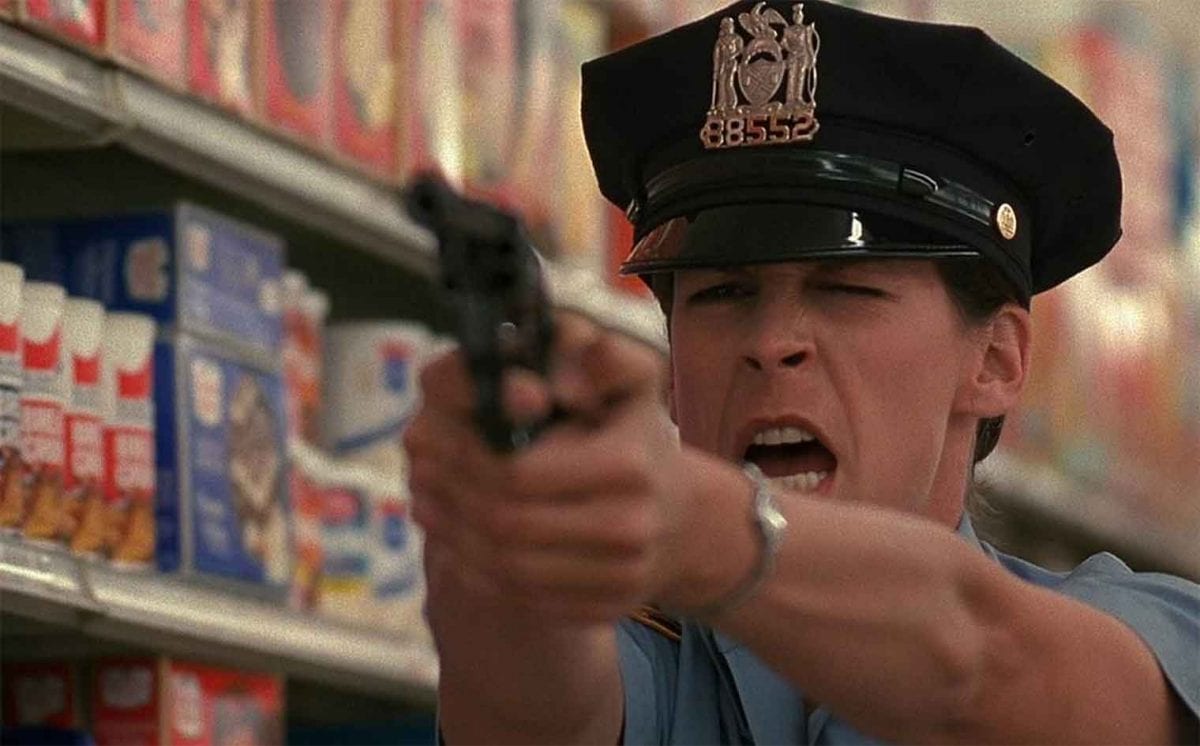
It all starts with the depiction of masculinity in her films. First, men are in all the positions of power. There are a lack of females in law enforcement and military, as shown in Blue Steel, Detroit, Zero Dark Thirty, The Hurt Locker, and K-19: The Widowmaker. In the case of Blue Steel and Zero Dark Thirty, when there is a woman in one of these positions, she is treated as a less-than-equal by her male counterparts. In fact, in Blue Steel, the fact that Megan wants to be a cop is somewhat of a joke and makes several male characters uncomfortable. Second, the male characters take advantage of the female characters. In Zero Dark Thirty, Maya’s bosses are all men, and in order for her to be seen as capable, she has to go above and beyond the achievements of her male counterparts. Furthermore, the only way they take her seriously is if she acts aggressively, like a man. This is similar as in Blue Steel, when the Police Chief doesn’t believe what Megan is trying to tell him, and only does he do so once she has broken the rules to capture the murderer she had been trying to warn him about.
More importantly, Bigelow plays off of the traditional movie tropes about masculinity in order to explore it further. From her female point of view she has a unique perspective into the male psyche, and that is really the crux of most of her films (it seems to be what interests her the most). Blue Steel examines how a weapon can give a man a sense of superiority and confidence he lacked before. In K-19: The Widowmaker, when things start to go very wrong it allows her to explore the male response to the warrior code – defend your country and be prepared to die doing so. Or in Point Break, Bigelow not only contrasts the 80’s action movie machoman with something a little more soft and sensitive, she explores male bonding and how they assert their masculinity on eachother. You can also see the exploration of male bonding in Hurt Locker. The characters in this film also discuss the importance of fatherhood, and the film offers two differing perspectives of young men who are struggling with what it means to be a father.
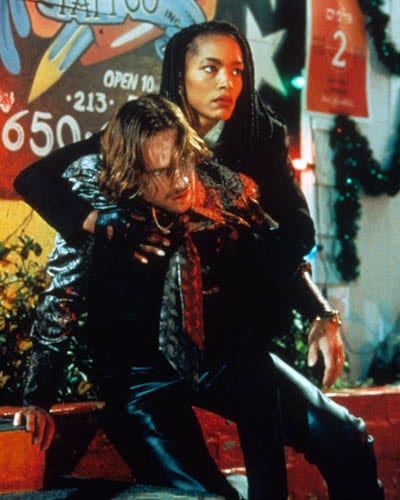
Bigelow also tweaks the traditional male protagonist. Contrary to the action-movie stereotype, Bigelow’s main male protagonists are certainly not fearless, not invincible, and don’t always know what they should be doing. In Point Break, Johnny Utah is young and inexperienced, he makes mistakes that get people killed, he very nearly dies several times when his own plans backfire. In Strange Days, Lenny is an ex-cop who is now a slick-talking sleazy criminal. His lack of strength causes him to get beaten up, and he prefers to use his brain rather than his fists. It is Angela Basset as “Mace” who brings the muscle as Lenny’s friend. And in The Hurt Locker, Sgt. James excels in deadly situations, but his colleagues are frightened of his risk-taking approach, rather than celebrate it. In their line of work, caution is key, and James’ hot headedness is equally liable to get them killed as it is to save their lives.
Want more Directors’ Trademarks?














